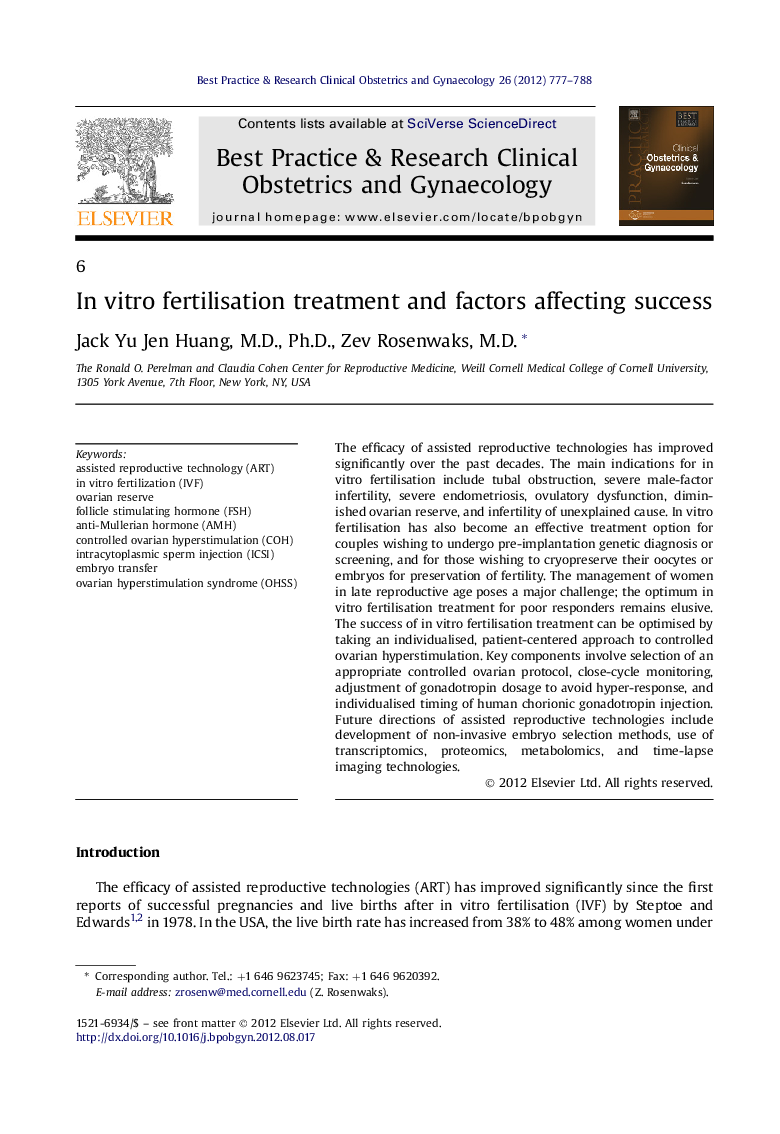| Article ID | Journal | Published Year | Pages | File Type |
|---|---|---|---|---|
| 3907679 | Best Practice & Research Clinical Obstetrics & Gynaecology | 2012 | 12 Pages |
The efficacy of assisted reproductive technologies has improved significantly over the past decades. The main indications for in vitro fertilisation include tubal obstruction, severe male-factor infertility, severe endometriosis, ovulatory dysfunction, diminished ovarian reserve, and infertility of unexplained cause. In vitro fertilisation has also become an effective treatment option for couples wishing to undergo pre-implantation genetic diagnosis or screening, and for those wishing to cryopreserve their oocytes or embryos for preservation of fertility. The management of women in late reproductive age poses a major challenge; the optimum in vitro fertilisation treatment for poor responders remains elusive. The success of in vitro fertilisation treatment can be optimised by taking an individualised, patient-centered approach to controlled ovarian hyperstimulation. Key components involve selection of an appropriate controlled ovarian protocol, close-cycle monitoring, adjustment of gonadotropin dosage to avoid hyper-response, and individualised timing of human chorionic gonadotropin injection. Future directions of assisted reproductive technologies include development of non-invasive embryo selection methods, use of transcriptomics, proteomics, metabolomics, and time-lapse imaging technologies.
